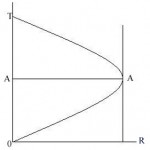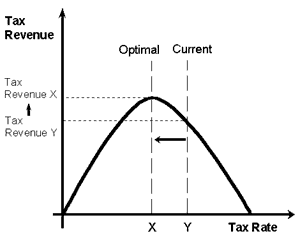 The debate rages on. This is an oral argument with very different closing statements and a hung jury. The case is argued by the plaintiff, “Fair Use”, and the defendant, “Don’t You Dare Use.” It is a vicious cycle: do Intellectual Property Rights encourage innovation or stifle it? The side that dedicates their career to research sees an impediment to new research. The side that dedicates their career to protecting the right to an economic advantage created by innovation sees a means to ensure incentive. Surely, both sides understand the argument of the other. The pareto optimal point for protection is the fork in the road, and consequently, the tipping point.
The debate rages on. This is an oral argument with very different closing statements and a hung jury. The case is argued by the plaintiff, “Fair Use”, and the defendant, “Don’t You Dare Use.” It is a vicious cycle: do Intellectual Property Rights encourage innovation or stifle it? The side that dedicates their career to research sees an impediment to new research. The side that dedicates their career to protecting the right to an economic advantage created by innovation sees a means to ensure incentive. Surely, both sides understand the argument of the other. The pareto optimal point for protection is the fork in the road, and consequently, the tipping point.
As an author and songwriter myself, and a lawyer for a firm that represents author’s, songwriters, artists and inventors, I am reminded of this debate daily. There is no “right” side; only different perspectives. It is easy for the academic/scientist to see a diluted purpose for strong intellectual property rights. After all, many professors and university research professionals share in the ownership of their research and inventions with their employer. Their economic prospectus is not completely contingent on the performance of their creations in the market, and therefore they need not rely heavily on protection and enforcement of the rights they exclusively hold. From the other perspective, lawyers and IP professionals understand the importance of exclusive rights to control and exploit ideas, and the advantages gained through enforcement of those rights. While I believe that it is important not to embark on a narrow campaign for strict property rights for intellectual property, and there is significant use for the public domain and other means for dissemination of information, a strong IPR system (and not so much just strong IPRs) encourages and breeds innovation and invention. With that said, there is a point of diminishing marginal returns, where every extra unit of “protection” of intellectual property rigthts actually begins to produce less of an incentivizing effect. In turn, the more “exclusivity” encompassed in the IP rights granted to an author/inventor/artist, the less creation results. Here, “exclusivity” is defined by (1) the duration of the term of protection, (2) the disclosure that is required in the registration process (less disclosure required = less creation), (3) whether compulsory licenses are granted or required under respective law, (4) whether and to what extent disclosure is required in transactions involving intellectual property rights, including licenses, and (5) whether and to what extent “fair use” of intellectual property is allowed under respective law. With these variables, we can follow a common bell curve graph to find where the pareto optimal point of protection might lie. For the sake of explanation, I have pictured here a Laffer Curve, generally used to show the law of diminishing marginal returns with respect to taxes and government revenue.
Using this diagram and plugging in the IPR context, ”Tax Rate” = “Exclusivity” (Protection) and “Tax Revenue” = Creation/Innovation.
Point Y on the curve is probably where many academics and research institutions, and some lawyers and IP professionals, believe we stand currently. The arrow demonstrates their perspective that we need less “exclusivity”, and in return we will have more creation (Point X). This shift undoubtedly includes a shorter protection term for copyrights and patents, compulsory licensing schemes provided by law, more liberal fair use allowances provided by law, and more disclosure requirements in the registration process and in transactions. As is argued by Jackie Hutter on her IP Asset Maximizer Blog, this shift from Point Y to Point X also represents the Open Innovation movement that many believe will not only lead us to a Pareto Optimal point in creation, but will lead to more robust market for intellectual property rights.
A point on the curve somewhere to the left of Point X is most likely home to many companies owning patent portfolios, artists that don’t collaborate or use old riffs, and fiction authors not relying on the research of others. It is also probably home to many lawyers, because it would make their job easier if the laws were steadfast protectionist. From this perspective, a shift to the right, or more “exclusivity”, would produce more creation by providing a an avenue to economic realization with less friction; “friction”, here, means fair use, compulsory licensing, and a public domain diluting their market advantage.
Interestingly, this exact debate has been the subject of a round of IP blog posts (see IPKAT, IPBiz, IAM Blog) in the past two days regarding the UK’s Chartered Institute of Patent Attorneys and its response to an article authored by Professor John Sulston in The Guardian, titled “How Science is Shackled by Intellectual Property.” While there are many other arguments to be made about the details of the article and the response to it, the funnel of the tornado is the bell curve above and the interests from both sides that must be balanced to find the Pareto Optimal point on that curve.
Professor Sulston demonstrates a real set of interests from the scientist community that, while they are largely the result of a lack of understanding of the patent system and IPR theory, are not without merit. He is rebuked by the Chartered Institute in their response for stating in the article that IP rights “have the tendency to stifle access to knowledge and the free exchange of ideas that is essential to science.” While this statement, without more, is not a full account of the truth, it does speak to the negative connotation the academic and science communities give to intellectual property rights. As Joff Wild points out on the IAM blog, this view is the probably the fault of lawyers and IP professionals for not properly educating the rest of the world on the importance of intellectual property rights. Therefore, I submit that it is not an inaccurate statement, it is just a misguided one; a perspective without a full understanding of the copyright and patent systems, their purpose and their total effect.
Which leads to one lingering thought: is the current position on the bell curve a Nash Equilibrium simply because of a lack of communication?

 Ian McClure is a former corporate & securities and intellectual property law attorney with
Ian McClure is a former corporate & securities and intellectual property law attorney with  Trevor M. Blum is a former Associate in the Chicago-based, valuation practice group of Ocean Tomo, LLC., an intellectual property (IP) consultancy. Additionally, he provided instrumental research support to Intellectual Property Exchange International, Inc., an IP exchange start-up. Trevor holds a B.S. from Indiana University and is currently an MBA candidate at the University of Cambridge, focusing on international business and finance. His interests also include entrepreneurship, economics, and informational visualization. He enjoys running and cycling in his free time. Trevor seeks to bring a transnational business perspective to the blog.
Trevor M. Blum is a former Associate in the Chicago-based, valuation practice group of Ocean Tomo, LLC., an intellectual property (IP) consultancy. Additionally, he provided instrumental research support to Intellectual Property Exchange International, Inc., an IP exchange start-up. Trevor holds a B.S. from Indiana University and is currently an MBA candidate at the University of Cambridge, focusing on international business and finance. His interests also include entrepreneurship, economics, and informational visualization. He enjoys running and cycling in his free time. Trevor seeks to bring a transnational business perspective to the blog. 
One Comment, Comment or Ping
Reply to “Two Takes on Intellectual Property Rights: Academic vs. Legal”